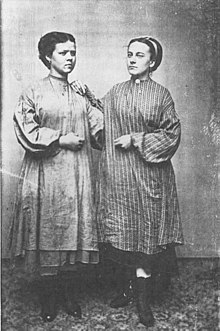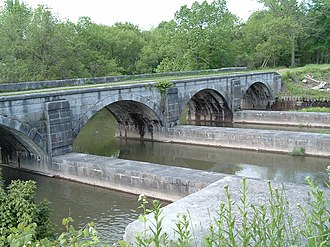11. A
1789 Brain Drain Begins
US Industrial Revolution
The late eighteenth century was an economy made up of skilled
artisans called master craftsmen. They made products like shoes, bread,
wagons...and often sold them in a shop attached to their home. They were
helped by apprentices who began at about age twelve. Successful
apprentices took a test at 21 and passing made them a journeyman and able
to work for others. Successful journeymen who saved enough of their
earnings could join an association as a master craftsman. It was a
simple existence with working based on demand and setting your own hours. This
system had not changed much in about two hundred years.
Samuel Slater had apprenticed in
England's textile manufacturing industry using the modern spinning frame. Good at mechanics, he learned to build the machines
and became a manager. Too much competition in England resulted in
the twenty-one year old immigrating g to Philadelphia.
Textiles Machinery and design plan were banned by Britain
so Sam committed the plans to memory.
He answers a 1789 ad from textile
manufacturer Moses Brown who thought textile manufacturing was the next big thing.
But he was
failing. The arrangement could not have been more successful and
in 1790 the result was a water powered textile mill. Machinery improvements followed. Expansion followed with a new 1793 factory
because sales had become
regional and over 20 years seven more
factories were built. By 1816 there were 165 factories in Southern New
England.
Eli Whitney's 1794 cotton gin
added to the process and created a north-south
connection.
|
 Wealthy Bostonian
Francis Cabot Lowell went to England and learned
all the latest milling technique. He returned and
formed a corporation which set up the soon to be
world renown Waltham-Lowell system.
Many
young country girls [shown here, click to enlarge] as they were called went for the
cultured city life. They could also
increase marriage prospects by growing a diary. Factory owners took a paternalistic
approach to mill operations. Girls lived in well
chaperoned dormitories, attended church regularly...
Owners hoped to create the opposite of the
intolerable conditions of coal dependent soot laden
English factories. This positive environment added to cost.
In early 19th century capitalism competition did not allow
having higher cost so the
attempt for to create an ideal work experience
failed completely until early in the 20th century when government
involvement began reforms. Wealthy Bostonian
Francis Cabot Lowell went to England and learned
all the latest milling technique. He returned and
formed a corporation which set up the soon to be
world renown Waltham-Lowell system.
Many
young country girls [shown here, click to enlarge] as they were called went for the
cultured city life. They could also
increase marriage prospects by growing a diary. Factory owners took a paternalistic
approach to mill operations. Girls lived in well
chaperoned dormitories, attended church regularly...
Owners hoped to create the opposite of the
intolerable conditions of coal dependent soot laden
English factories. This positive environment added to cost.
In early 19th century capitalism competition did not allow
having higher cost so the
attempt for to create an ideal work experience
failed completely until early in the 20th century when government
involvement began reforms.
Some trades didn't wait for technology to make the
necessary machines to modernize their business. They
copied the new process. For example master
craftsmen making shoes added price competition to
their quality competition. How? Expensive journeyman
were replaced by apprentices who did just
one part of the process. Cheaper than journeymen
they were paid a low market wage and not a just
wage. Capitalism now required new rules. Price
competition meant lower cost which meant lower wages
and more technology which meant
innovation which meant broader markets. For most
producers this would all centered on profit maximization. Editor's
Note: Today outsourcing and free trade agreements perform the
these same functions that are needed to maintain
profit.
|
The
Industrial Revolution
Changed the Direction of
Society
1) Values changed and consumerism replaced
republican simplicity as cheaper more
diverse advertised goods were sought by most people.
2 Health improved with more food, better
medicine which extended life expectancy.
3) Family farms began to disappear as
agriculture become technologically dependent.
4)
Gender Spheres changed as work moved from
the home to town creating different work spaces.
5) Education was reshaped along factory lines
with ordered classes, set schedules and BELLS.
6) Printed materials for politics, books, sheet
music all got cheaper.
7) Pianos and later the phonograph became
inexpensive home entertainment.
8) Rapid urbanization as those living in cities
rose from 5% to over fifty percent.
|









